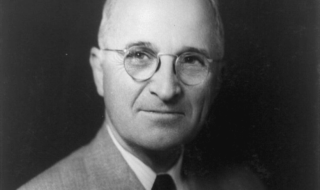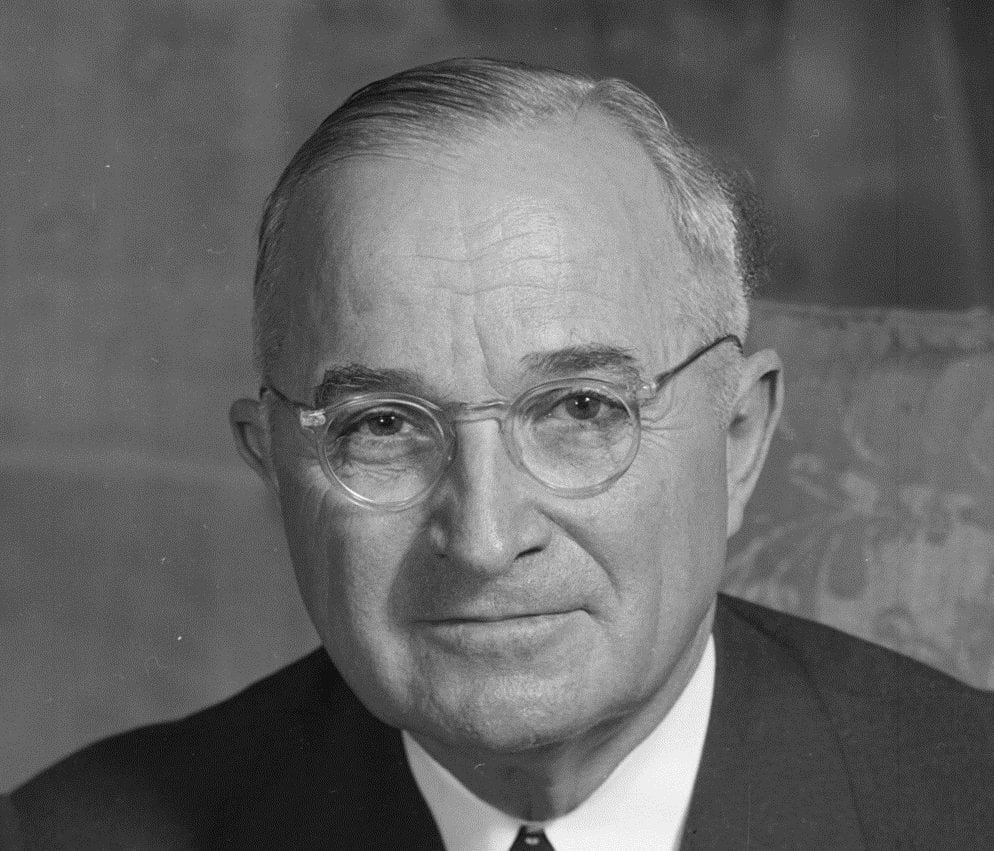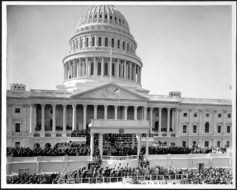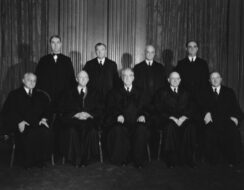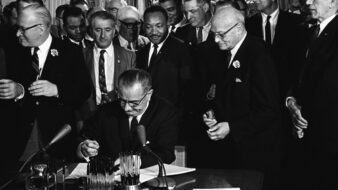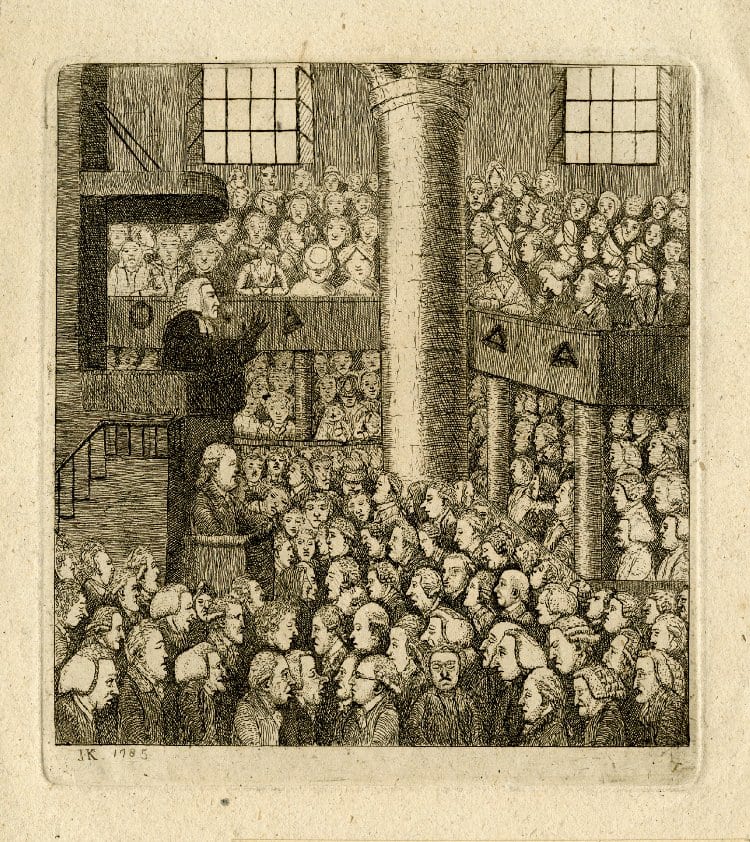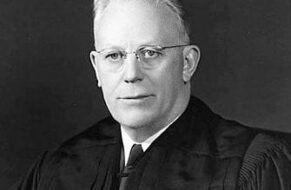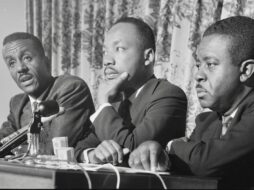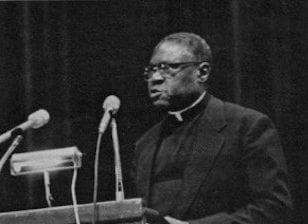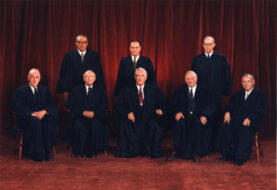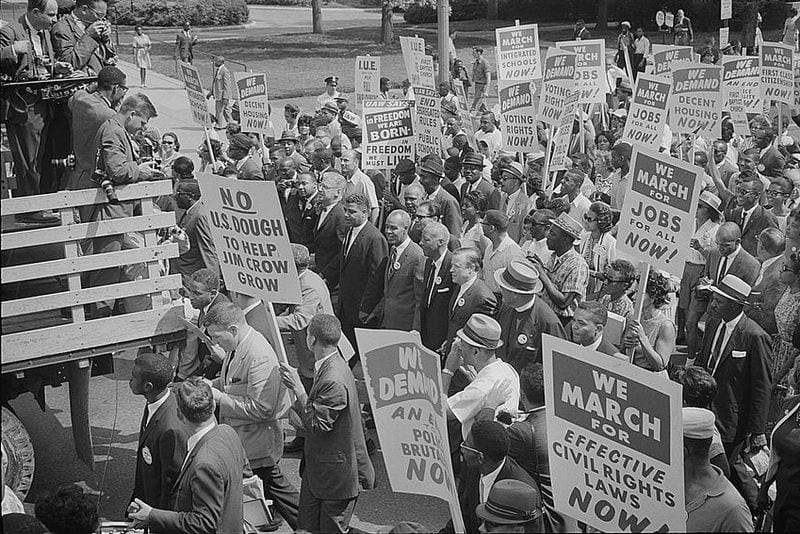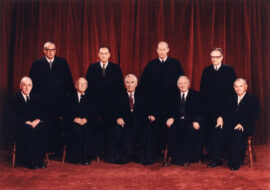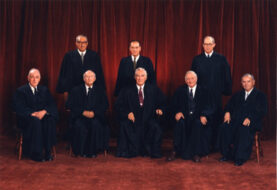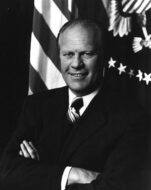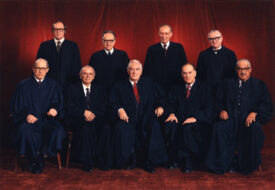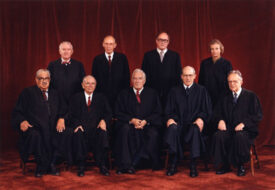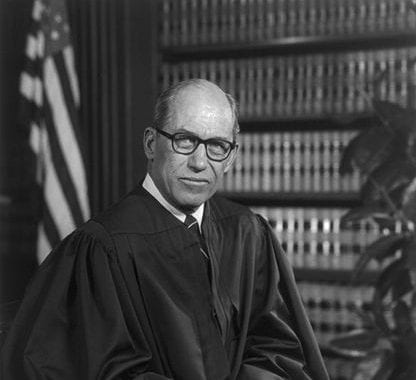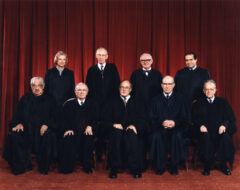
No study questions
No related resources
Introduction
As the United States struggled with the issue of civil rights, another issue of rights began to gain attention: equal rights or equal opportunities for women. As with African American civil rights, the movement for women’s rights had been part of American politics since the Revolution. It too gained momentum following the Civil War; one accomplishment was the Nineteenth Amendment (1920), which gave women the right to vote. (Several states had granted them that right earlier.) Advocates for women’s rights also proposed an amendment guaranteeing equality of rights for women. First introduced in Congress in 1923, the amendment was introduced every year thereafter and passed and submitted to the states finally in 1972, with a deadline for ratification of March 22, 1979. The amendment read:
Section 1. Equality of rights under the law shall not be denied or abridged by the United States or by any State on account of sex.
Section 2. The Congress shall have the power to enforce, by appropriate legislation, the provisions of this article.
Section 3. This amendment shall take effect two years after the date of ratification.
Thirty-five of the necessary 38 states ratified the amendment before opposition to it, led largely by Phyllis Schlafly, stalled the process. Under pressure from women’s groups like the National Organization for Women, Congress extended the ratification deadline, but the amendment never passed. The Florida House of Representatives passed the amendment several times but the Senate did not, rejecting it by a vote of 16 for, 22 against a week before the extension deadline.
Ruth Bader Ginsburg, “The Need for the Equal Rights Amendment,” American Bar Association Journal, 59 (September, 1973), 1013–1019. We have omitted the article’s footnotes and subheadings. Ruth Bader Ginsburg was the first tenured female law professor at the Columbia School of Law. She became an Associate Justice of the Supreme Court in 1993. Reprinted with permission from the September 1973 issue of ABA Journal. Copyright 2018, ABA Journal. All rights reserved.
The notion that men and women stand as equals before the law was not the original understanding, nor was it the understanding of the Congress that framed the Civil War amendments. . . .
Mid-nineteenth century feminists, many of them diligent workers in the cause of abolition, looked to Congress after the Civil War for an express guarantee of equal rights for men and women.1 But the text of the Fourteenth Amendment appalled the proponents of a sex equality guarantee. Their concern centered on the abortive second section of the amendment, which placed in the Constitution for the first time, the word “male.” Threefold use of the word “male,” always in conjunction with the term “citizen,” caused concern that the grand phrases of the first section of the Fourteenth Amendment – due process and equal protection of the laws – would have, at best, qualified application to women.
After close to a century’s effort, the suffrage amendment was ratified, according to female citizens the right to vote. The most vigorous proponents of that amendment saw it as a beginning, not as a terminal point. Three years after the ratification of the Nineteenth Amendment, the National Women’s Party succeeded in putting before Congress the equal rights amendment that has been reintroduced in every Congress since 1923. . . .
Persons unacquainted with the history of the amendment deplore its generality and the absence of investigation concerning its impact. The models of the due process and equal protection clauses should suffice to indicate that the wording of the amendment is a thoroughly responsible way of embodying fundamental principle in the Constitution. Before the amendment was proposed, the National Women’s Party, with the aid of a staff of lawyers and expert consultants, tabulated state and federal legislation and court decisions relating to the status of women. Advisory councils were formed, composed of different economic and professional groups of women – industrial workers, homemakers, teachers and students, federal employees. Each council conducted studies of the desirability of equal rights and responsibilities for men and women. Reading debates on the amendment in the law journals of the 1920s is enlightening. The objections still voiced in 1973 were solidly answered then.
Opponents of the amendment suggest the pursuit of alternate routes: particularized statutes through the regular legislative process in Congress and in the states, and test case litigation under the Fourteenth Amendment. Only those who have failed to learn the lessons of the past can accept that counsel. . . .
. . . A recent government computer search, the solicitor general told the Supreme Court this term, revealed that 876 sections in the United States Code contain sex-based references. Similar searches in some of the states have turned up hundreds of state statutes in need of revision.
Will major legislative revision occur without the impetus of the equal rights amendment? Probably not if past experience is an accurate barometer. . . .
A preview of the kind of revision that can be expected under the stimulus of the amendment has been provided by legislative analyses in some of the states. These analyses should reassure those who fear intolerable change in the wake of the amendment. They propose extension of desirable protection to both sexes; for example, state minimum wage laws would be extended to men; in no case do they propose depriving either sex of a genuine benefit now enjoyed.
As a sample of laws destined for the scrap heap if the amendment is ratified, consider these: Arizona law stipulates that the governor, secretary of state, and treasurer must be male. In Ohio only men may serve as arbitrators in county court proceedings. In Wisconsin barbers are licensed to cut men’s hair and women’s hair, but cosmeticians may attend to women only. Georgia law, still faithful to Blackstone, provides:
The husband is head of the family and the wife is subject to him; her legal civil existence is merged in the husband’s, except so far as the law recognizes her separately, either for her own protection, or for her benefit, or for the preservation of public order.
Another embarrassment from the same state reads: “Any charge or intimation against a white female of having sexual intercourse with a person of color is slanderous without proof of special damages.” Legislative inertia keeps laws of this kind on the books. Prof. Thomas Emerson summarized the situation this way: “It is not a weakness but a strength of the amendment that it will force prompt consideration of changes that are long overdue.” . . .
In the 1971 term, a new direction was signaled when the Supreme Court responded affirmatively to two complaints of unconstitutional sex discrimination. In Reed v. Reed, 404 U.S. 71 (1971), the Court . . . relied on the due process clause to hold that an unwed father who wished to retain custody of his children had to be given a hearing of the kind that would be accorded to any mother or any married father. The opinions in both cases were laconic; they provided an uncertain basis for predicting the Court’s future course.
On May 14, 1973, in Frontiero v. Richardson, 411 U.S. 677, the Court moved forward more swiftly than many had anticipated; in effect, it served notice that sex discrimination by law would no longer escape rigorous constitutional review. . . .
. . . If the equal rights amendment is adopted, the hard task of revision will be undertaken in earnest; absent ratification, comprehensive revision may continue to be regarded as “premature and unnecessary.”
Reasoned appraisal of the amendment requires consideration of the realities of life for an increasing population of women in the latter half of the twentieth century. . . . [O]ver the last fifty years the percentage of working women in the population has approximately doubled, and the projection is that this trend will accelerate. . . .
With the disappearance of home-centered economic activity, and the possibility now open to women to determine whether and when to bear children, perceptive persons of both sexes recognize that there is no justification for confining women to a role of their own.
Some aspects of the traditional arrangement disfavor men, and some exact a toll from both sexes. Women who have paid serious attention to laws that appear to disfavor men agree with the position stated by Sarah Grimke, noted abolitionist and advocate of equal rights for men and women. She said in 1837: “I ask no favors for my sex. All I ask of our brethren is that they take their feet off our necks.” Favors rarely come without an accompanying detriment. Too often men of the law fail to grasp this basic point.
A number of “horribles” have been raised in opposition to the amendment. Four of them dominate the literature of amendment opponents.
First horrible. Women will lose the benefit of protective labor laws. Today, challenges to these laws rarely emanate from male employers who wish to overwork women. Since the passage of Title VII,2 they have come overwhelmingly from blue-collar working women to overcome what they regard as a system that protects them against higher paying jobs and promotions. In the vast majority of Title VII employment discriminations cases, courts have understood these challenges. Legislatures are beginning to abandon disingenuous protection for women and to extend genuine protection to all workers. Models are ample. In Norway, for example, where opposition to “special protection for women only” came predominantly from women’s organizations, a 1956 workers protective act assures safe and healthy conditions for employees of both sexes. Moreover, extension rather than invalidation of laws that benefit only one sex is a route recently traveled by the Supreme Court. In Frontiers v. Richardson, fringe benefits for married male members of the military were extended to married female members. The National Women’s Party put it this way decades ago in 1926: protective legislation that is desirable
Should be enacted for all workers. . . . Legislation that in-cludes women but exempts men . . . limits the woman worker’s scope of activity . . . by barring her from econ-omic opportunity. Moreover, restrictive conditions [for women but not for men] fortifies the harmful assump-tions that labor for pay is primarily the prerogative of the male.
Second horrible. Wives will lose the right to support. Only if our legislatures or courts act capriciously, spitefully, without regard for the public welfare, and in flagrant disregard of the intent of the Amendment’s proponents. In a growing number of states the equal rights amendment will occasion no change whatever in current support law. In these states, and under the amendment in all states, either husband or wife can be awarded support depending on the couple’s circumstances. Who pays in any particular family will depend upon the division of responsibilities within that family unit. If one spouse is the breadwinner and the other performs uncompensated services at home, the breadwinning spouse will be required to support the spouse who works at home.
Underlying the amendment is the premise that a person who works at home should do so because she, or he, wants to, not because of an unarticulated belief that there is no choice. The essential point, sadly ignored by the amendment’s detractors, is this: the equal rights amendment does not force anyone happy as a housewife to relinquish that role. On the contrary, it enhances that role by making it plain that it was chosen, not thrust on her without regard to preference.
Third horrible. Women will be forced to serve in the military. Only if men are, and assignments would be made on the basis of the individual capacity rather than sex. With the draft terminated, it is high time for consideration of the other side of that coin. Women who wish to enlist must meet considerably higher standards than men; women in service are denied fringe benefits granted men and do not receive equal vocational training opportunities. The reason for higher standards for women was given by an Air Force colonel in a deposition taken in December, 1972. He explained: “We have had and we continue to have roughly twice as many women apply[ing] as we are able to . . . take. . . . We don’t have an excess of men over what we can take.”
Young women’s groups uniformly testified during congressional hearings on the amendment that they did not wish exemption from responsibility for service. Conspicuous among these groups was the 200,000 member Intercollegiate Association of Women Students, a group appropriately characterized as “middle American.”
In 1948, long before women and the military became an emotion-charged issue in connection with the equal rights amendment, Gen. Dwight D. Eisenhower observed:
Like most old soldiers I was violently against women sol-diers. I thought a tremendous number of difficulties would occur, not only of an administrative nature . . . but others of a more personal type that would get us into trouble. None of that occurred. . . . In the disciplinary field, they were . . . a model for the Army. More than this their influence throughout the whole command was good. I am convinced that in another war they have got to be drafted just like the men.
Final horrible. Rest rooms in public places could not be sex separated. Emphatically not so, according to the amendment’s proponents in Congress, who were amused at the focus on the “potty problem.” Apart from referring to the constitutional regard for personal privacy, they expressed curiosity about the quarter from which objections to current arrangements would come. Did the people who voiced concern suppose that men would want to use women’s rest rooms or that women would want to use men’s? In any event, the clever solution devised by the airlines suggests one way out of the problem.
Some people have expressed fear of a “flood of litigation” in the wake of the equal rights amendment. But the dramatic increase in sex discrimination litigation under the Fifth and Fourteenth Amendments in the 1970s is indicative that, if anything, ratification of the amendment will stem the tide. The amendment will impel the comprehensive legislative revision that neither Congress nor the states have undertaken to date. The absence of long overdue statutory revision is generating cases by the hundreds across the country. Legislatures remain quiescent despite the mounting judicial challenges, challenges given further impetus by the Supreme Court’s decision in Frontiero v. Richardson. Ratification of the amendment, however, would plainly mark as irresponsible any legislature that did not undertake the necessary repairs during the two-year period between ratification and effective date.
To date, three fifths of the states have ratified the amendment; these thirty states represent a clear majority of the country’s population. One state, Nebraska, has attempted to withdraw its ratification. But New Jersey and Ohio took the same action with respect to the Fourteenth Amendment, and New York ratified and then withdrew its ratification of the Fifteenth Amendment. Congress at that time evidently concluded that ratification, once accomplished, could not be undone. New Jersey and Ohio counted to constitute the requisite three fourths for promulgation of the Fourteenth Amendment. New York was counted among the states that ratified the Fifteenth Amendment.
The equal rights amendment, in sum, would dedicate the nation to a new view of the rights and responsibilities of men and women. It firmly rejects sharp legislative lines between the sexes as constitutionally tolerable. Instead, it looks toward a legal system in which each person will be judged on the basis of individual merit and not on the basis of an unalterable trait of birth that bears no necessary relationship to need or ability. As the Federal Legislation Committee of the Association of the Bar of the City of New York explained:
[T]he Amendment would eliminate patent discrim-ination, including all laws which prohibit or discourage women from making full use of their political and economic capabilities on the strength of notions about the proper “role” for women in society. Any special exemptions or other favorable treatment required by some women because of their physical stature or family roles could be preserved by statutes which utilize those factors – rather than sex – as the basis for distinction.
- 1. Ginsburg refers to the attempts made by some women’s rights advocates to argue that insofar as women were citizens of the United States, the language of the Fourteenth and Fifteenth Amendments ought to be understood as guaranteeing them (among other equal rights) the right to vote. This argument was rejected by the Supreme Court in Minor v. Happersett, 88 U.S. (21 Wall.) 162 (1875), which ruled that voting was not a citizenship right.
- 2. a clause of the 1964 Civil Rights Act that bars discrimination in employment based on race, color, religion, sex or national origin

Conversation-based seminars for collegial PD, one-day and multi-day seminars, graduate credit seminars (MA degree), online and in-person.






